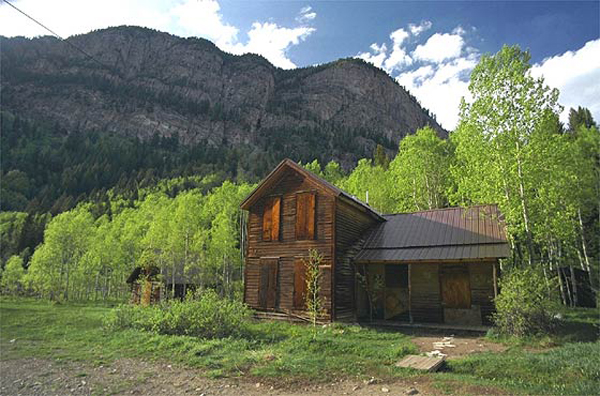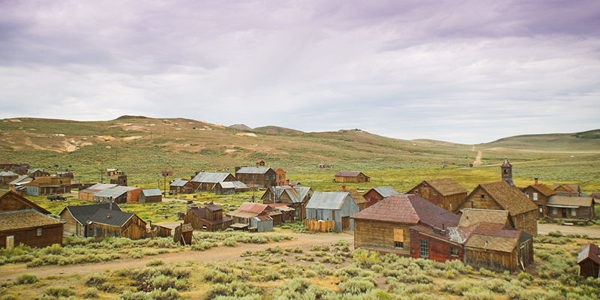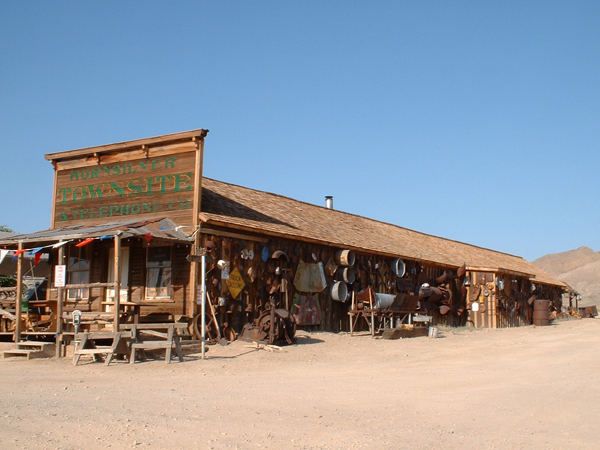
A recent blog post about a rebuilt ghost town in Spain turned out to be quite popular. This got me thinking about the practicality of living in ghost towns. If you don’t mind fresh air, no traffic jams, lack of noise and nosey neighbors then you might like it just fine. I suspect land prices would be very low in many cases. Heck, you might even get elected mayor or something. I’ve seen a number of these places with one or more stores that eek out a living catering to tourists, hunters and locals. A few blossom into art communities and retirement locations. One key benefit is you don’t necessarily have to start from scratch. It may be easier to rebuild an existing structure in decent condition (although many times it’s not). Oftentimes there are old building materials available that can be recycled for free. And, you might be attracted to the old time look of the buildings. So many new buildings nowadays lack any sense of history or character, making some of these old ghost towns look even more appealing.

From Wiki: “A ghost town is an abandoned village, town or city, usually one which contains substantial visible remains. A town often becomes a ghost town because the economic activity that supported it has failed, or due to natural or human-caused disasters such as floods, government actions, uncontrolled lawlessness, war, or nuclear disasters.
Some ghost towns, especially those that preserve period-specific architecture, have become tourist attractions. A few ghost towns get a second life, often due to heritage tourism’s generating an economy able to support residents. Walhalla, Victoria, Australia, for example, was a town deserted after its gold mine ceased operation. Owing to its accessibility and proximity to other attractive locations, Walhalla has had a recent economic and population surge.”

Wiki
Image source 1, 2: Ghost Town Gallery (more than 1,800 pictures from 180 ghost towns and historic places in the United States)
Image source: Gold Point Ghost Town

To whom it may concern,
I work for a UK/US TV production company called October Films (website link below) and we are very interested in ghost towns in the USA. We are particularly interested in finding communities of people that are relocating to Ghost towns in the US to live off the grid. Is this something that you have come across/ any advice on this front would be greatly appreciated.
http://www.octoberfilms.co.uk/
Many Thanks,
Louis
Louis Mole
Development Shooting Researcher
M: +44 (0)7753170005
louis.mole@octoberfilms.co.uk
How exactly would you go about this sort of thing. And are they selling property anywhere?
You’d have to investigate this on a case by case basis. First, I would narrow down the general area you’d like to live in then move there and gradually check out ghost towns and local properties.
I looked at the 1800 ghost town photos, it was really fantastic :)
http://www.ghosttowngallery.com/
Thanks for the link :)
Which one have you decided to live in? Can you top the photo I used?
Which one would I live in ? Well they all look nice to me LOL
But I recently learned about Americans expatriating to Chile (and similar) now I’m thinking along those lines :) South America !
But I’ll have to wait until I have some money. I can imagine an economizer in Rio Rancho preceding that :)
I look forward to visiting some western ghost towns as well :)
It’s freezing cold in Maine right now, so unpleasant! I’m ready to go south :)
Cheers,
Craig
Just so folks know, you can’t live in Bodie. It is a Ca state historical park. It is held in a state of arrested decay.
A very interesting place to visit and see. A lot of buildings are still standing and the mine works are all there.
One has to remember that many ghost towns were not ideal sites on which to live. It was the gold or silver that made the hardship and difficulties worth it. Bodie is a good example. One would never have picked that town site by itself for a place to start a homestead. Bodie is at 8300 ft in elevation, on an open plateau and the winters are brutal. Average snowfall is 8ft. Bodie has snow drifts 20-30 ft deep. Residents would tunnel between buildings and the mine.
20-30 foot drifts? I’ll cross Bodie off my list.
For more on the ghost towns of Lake Valley, Hillsboro, and Kingston, N.M. check out my series of posts at:
http://altbuildblog.blogspot.com/search/label/Building%20In%20Hillsboro%20And%20Kingston%20New%20Mexico
Sorry for my shameless self promotion but these posts may give another more detailed look at buildings from the silver boom and bust of the late 19th century in southwestern N.M. Thanks for your work Owen.
Thanks for the input. Good suggestions like this contribute to the discussion and so we welcome your work. The link works fine for me.